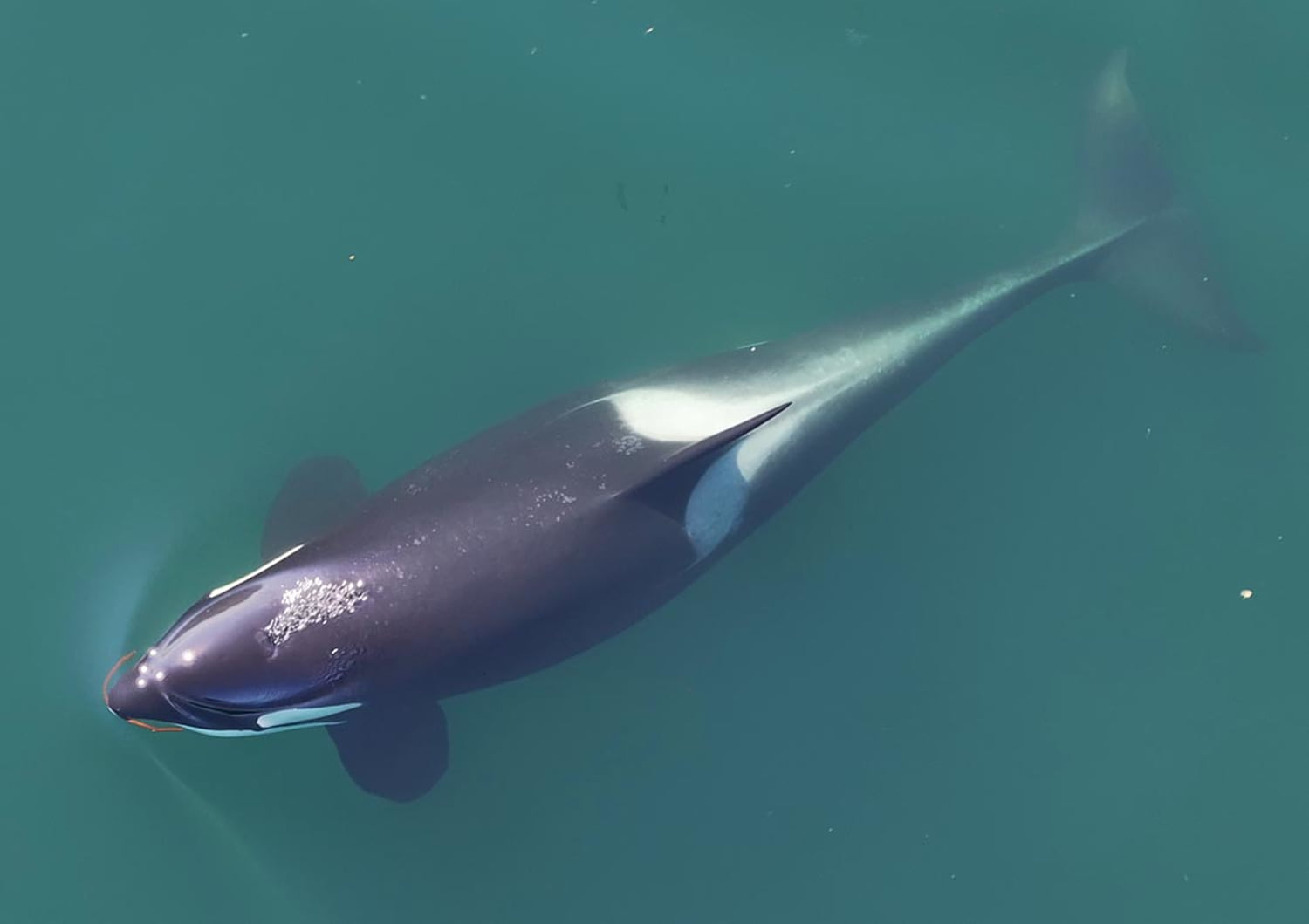
Southern resident killer whales are a critically endangered population protected under the Marine Mammal Protection Act. Their current population is about 73. The animals are social and live in close-knit family groups led by mothers and grandmothers.
The whales are given tracking numbers by the Center for Whale Research and are closely observed by researchers, photographers and whale watchers — particularly when they’re near communities along Puget Sound, like Seattle.
“I would venture to say it’s the most well-studied population of whales on the planet regardless of species, because it’s been going on for 50 years,” Giles said.
How, then, did this stunning behavior escape researchers’ notice for decades?
They didn’t have the right perspective.
“It’s a really cryptic behavior. It’s happening almost entirely underwater and it’s a piece of kelp wedged between two animals that’s only about 2 feet long,” Weiss said.
More recently, researchers have started using drones to document the whales from an aerial perspective. As drone technology has improved, so has the data they’ve collected.
“What’s really changed for us in the 2024 field season — we got a new drone,” Weiss said, noting that it provided higher-resolution video.
He said the researchers first noticed a whale pushing kelp against another whale in April and then observed whales rubbing against each other for about 15 minutes.
Once the researchers noticed the strange behavior, they began to see it more often.
“We started seeing it a lot — to the point now where most days we fly the drone, we do see at least one pair of whales doing this behavior,” Weiss said.
The researchers suspect the behavior has been happening all along.
“We didn’t have the right vantage. I do believe this is something that’s probably been happening since time immemorial,” Giles said. “I think we’ve just scratched the surface of understanding these animals, partly because of technology.”
The southern residents have been in the spotlight of conservation efforts for decades. The whales are facing a number of threats, including declining quantity and quality of prey, toxic pollution and disturbance from vessel noise, according to the Marine Mammal Commission. Some research suggests the southern residents are on a path toward extinction, if more aggressive measures aren’t taken.
Weiss said the new findings offer yet another reason why it’s important to take care of the species.
“Discovering something like this, late in the game for how long we’ve studied them, says there’s a lot more to learn and they need to be around to learn those things,” he said. “This is not just a collection of 73 whales … It’s a unique culture and also a society. These are whales with a set of traditions that go back thousands of years.”
